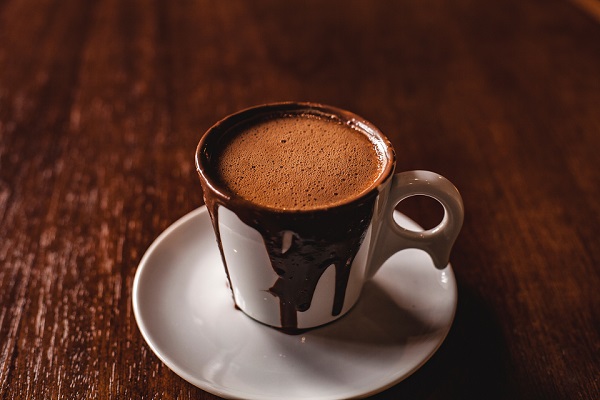Chocoholics of the world rejoice! World chocolate day is tomorrow! On the 7th of July, we will all have a legitimate excuse to indulge our sweet tooth (as if we even needed one!) and show appreciation for the wonderful cocoa bean and everything it has done for us.

It’s World Chocolate Day 2020, and what better way to celebrate it than by talking about hot chocolate. It’s a delicious treat that can be found in coffee shops, cafes and all manner of businesses that serve food. To many, it’s also a favourite at home, the perfect calming drink before bed.
However, how many of you know the history of hot chocolate? Not many I would expect! In this article, prepare to learn the rich history of hot chocolate and uncover it’s deeply rooted roots.
Chocolate, and chocolate drinks have a long and interesting history that has now developed into the diverse range of chocolate products we enjoy today.
The early history of chocolate actually begins in a liquid drink form, rather than the solid bars of milk and dark chocolate we know today. As early as 450 BC, the raw beans were fermented, roasted and ground into a paste that was then mixed with water, spices and chilli peppers for flavour, making it really HOT chocolate. This cocoa-based drink was believed to grant the drinker strength and act as an aphrodisiac. As a result, it was coveted by royalty, fed to warriors, and used as a medicine by the Mayans.
It took until the 16th Century for Europeans to get their hands on the cacao bean, and throughout the next 100 years the ingredient spread throughout the countries of Europe. Originally, the European drink was flavoured with sugar and cinnamon to appeal to the palate of the European aristocracy who were the only ones who could afford it. Throughout the 17th and 18th Century, the ways we enjoyed chocolate changed, with it becoming commercialised as new techniques and methods were created.
The Spanish are credited with serving chocolate drinks hot, sweetened, and without any additional ingredients like chilli, as customary originally in South America. From Spain, the drink spread throughout Europe, and the world soon after. Dedicated “chocolate houses” were established in cities, similar to the coffee shops we enjoy today. Many of these ‘Chocolate houses’ can still be found in areas of Germany, Belgium and Austria.
Evolution takes time – it wasn’t until the middle of the 18th Century for chocolate to be manufactured as a solid chocolate bar, by a man named Stephen Fry in Britain. This was achieved by pressing a mixture of cocoa powder and sugar into a specific shape. 28 years later, Swiss chocolatier Daniel Peter combined these ingredients with powdered milk, creating milk chocolate. Up until this point, chocolate was made much stronger and darker, creating a bitter flavour.
Throughout the world, hot chocolate is served very differently. Some like the drink as a light, thin smooth chocolate flavour. Others like a thick, intensely chocolatey cup that’s somewhere between a liquid and a solid version of chocolate.
Whichever way you like it, though - we can all agree that chocolate is a delicious ingredient; and its popularity is shown in the huge range of chocolate flavoured foods, drinks and creative recipes being enjoyed every day.
What your coffee shop can do
With coffee shops opening on the 4th of July, World Chocolate Day, falling on the 7th, poses a unique opportunity for many independent eateries and cafes.
For the special day, why not bake and offer a variety of chocolatey goods, in the form of cookies, biscuits and cakes. Discount your hot chocolate for the day, or perhaps spruce the hot chocolate up with free toppings, such as marshmallows and chocolate wafer straws. This way, you have something to promote and shout about on social media, and customers benefit from gorging on chocolate at a reduced price (a definite win-win in our eyes).
World chocolate day is a global celebration of all things chocolate and that should be an inclusive experience for everyone who wishes to spoil themselves, regardless of their dietary needs.
Many of today’s most popular chocolate products are made with ingredients that can prohibit individuals that have food allergies and intolerances from participating such as; milk, peanuts, tree nuts and soya.
For this reason, ensure your coffee shop is as inclusive as possible. Vegan alternatives should be available, as should nut-free products. By representing all needs, you expand your number of potential customers.



